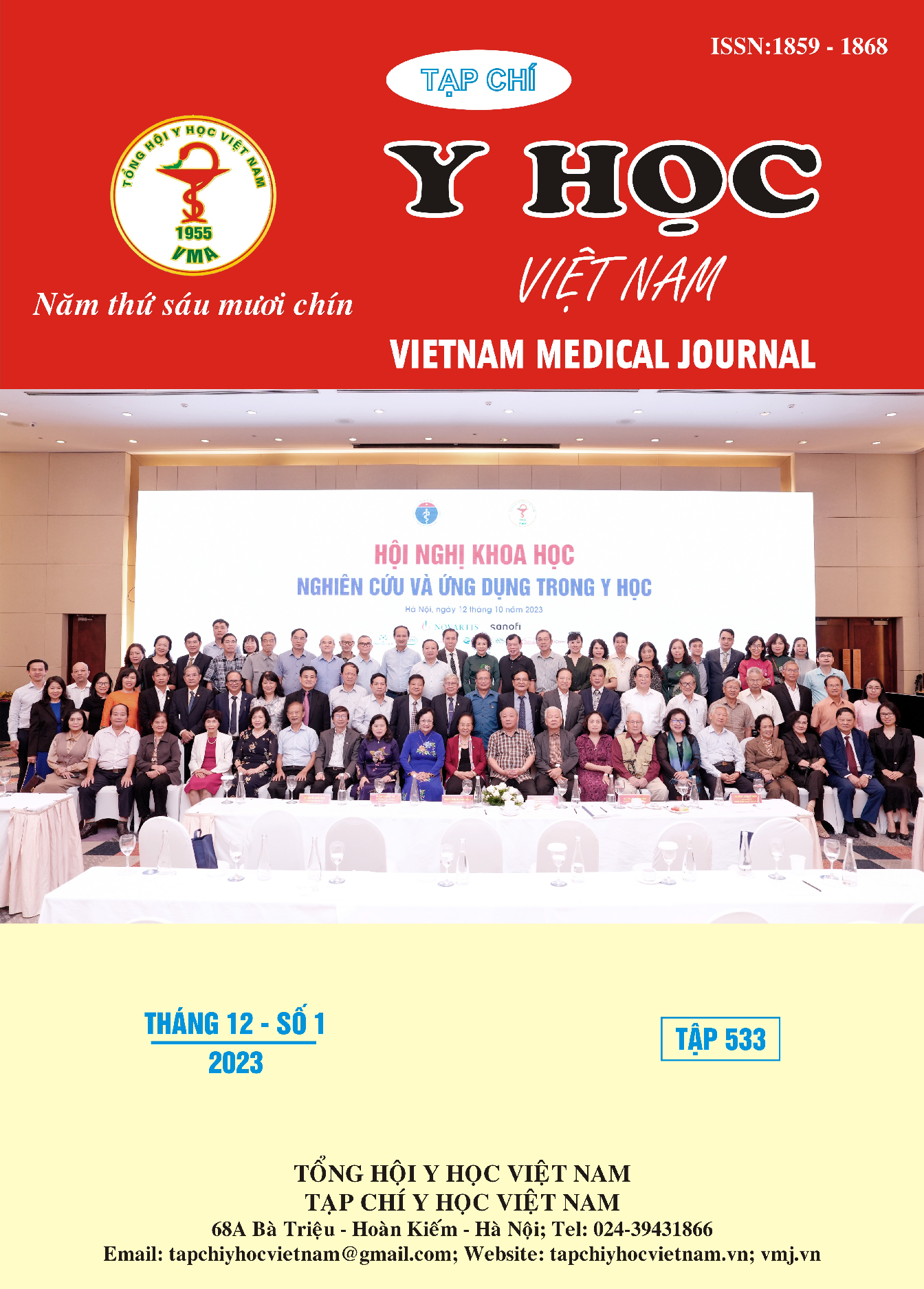ASSESSMENT OF PHYSICAL ACTIVITY IN PATIENTS WITH CHRONIC HEART FAILURE: A CROSS-SECTIONAL STUDY IN HAI DUONG, VIETNAM
Main Article Content
Abstract
Introduction: Heart failure has a significant impact on the physical activity and quality of life of patients. Several studies have shown that reduced physical activity is a predictor of mortality in heart failure, while increased physical activity can improve functional capacity, quality of life, and reduce healthcare utilization. However, most studies on physical activity in heart failure patients have been conducted in developed countries. Data on physical activity in heart failure patients in Vietnam is limited. Objective: This study aimed to assess the level of physical activity using the IPAQ questionnaire in outpatients with mild heart failure at the Cardiology Center of Hai Duong Provincial Hospital, Vietnam. Subjects: Outpatients with heart failure treated at the Cardiology Center of Hai Duong Province from December 2021 to April 2022. Study design: Cross-sectional descriptive study. Results: One hundred forty patients were included in the study, with a mean age of 56.3 ± 8.5 years, and a male to female ratio of 1.59:1. The level of physical activity in heart failure patients according to the IPAQ questionnaire was as follows: high-level physical activity was 27.1%, moderate-level physical activity was 40%, and low-level physical activity was 32.9%. The proportion of complete physical activity in the study was 67.1%. Compared with the group of patients under 60 years old, the group of heart failure patients over 60 years old had a significantly lower level of physical activity with OR= 0.032 and p= 0.001. There was no significant difference in physical activity level by gender and ejection fraction. Conclusion: The study showed that physical activity in heart failure patients was lower in the older age group, but there was no significant difference in physical activity level by gender and ejection fraction.
Article Details
Keywords
physical activity, IPAQ questionnaire, heart failure, Hai Duong
References
2. Craig CL, Marshall AL, Sjöström M, et al. International physical activity questionnaire: 12-country reliability and validity. Medicine and science in sports and exercise. Aug 2003;35(8): 1381-95. doi: 10.1249/ 01.Mss.0000078924. 61453.Fb
3. Pfaeffli L, Maddison R, Jiang Y, Dalleck L, Löf M. Measuring physical activity in a cardiac rehabilitation population using a smartphone-based questionnaire. Journal of medical Internet research. Mar 22 2013;15(3):e61. doi:10.2196/ jmir.2419
4. Piepoli MF, Conraads V, Corrà U, et al. Exercise training in heart failure: from theory to practice. A consensus document of the Heart Failure Association and the European Association for Cardiovascular Prevention and Rehabilitation. European journal of heart failure. Apr 2011;13(4):347-57. doi:10.1093/eurjhf/hfr017
5. Dontje ML, van der Wal MH, Stolk RP, et al. Daily physical activity in stable heart failure patients. The Journal of cardiovascular nursing. May-Jun 2014;29(3): 218-26. doi: 10.1097/J CN.0b013e318283ba14
6. Klompstra L, Jaarsma T, Strömberg A. Physical activity in patients with heart failure: barriers and motivations with special focus on sex differences. Patient preference and adherence. 2015;9:1603-10. doi:10.2147/ppa.S90942
7. Chien HC, Chen HM, Garet M, Wang RH. Predictors of physical activity in patients with heart failure: a questionnaire study. The Journal of cardiovascular nursing. Jul 2014;29(4):324-31. doi:10.1097/JCN.0b013e31828568d6


